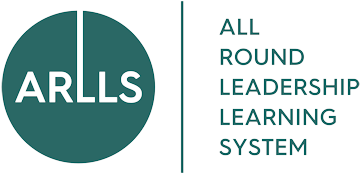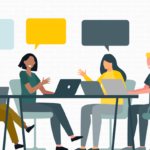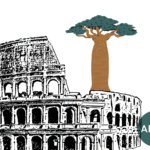Inside the intentional structure of our online courses and leadership workshops and how it’s helping young leaders thrive.
Built on Brain Science
“[W]ithout an understanding of human cognitive architecture, instruction is blind”. (Sweller, 2017 in Kirschner & Hendrick, 2020).
At ARLLS, we’re not just educators, we’re also learning designers. Our team has deep expertise in how people learn, and we’ve used that to reimagine leadership education for a new generation. We took the best of traditional leadership theory, re-contextualised it for young people, and built an entire pedagogy from the ground up. One grounded in cognitive science, educational psychology, and real-world application. We don’t just teach leadership, we’ve engineered learning experiences that ignite leadership skills and have used academic theory to do it. From the way our Moodle courses are structured to how our workshops unfold in real time, every detail of the ARLLS experience is rooted in how learning actually happens.
But we didn’t stop there. Like a startup in stealth mode, we gathered feedback across diverse schools, age groups, and contexts, iterated and improved every element of the experience based on real data, and launched with confidence. What we launched wasn’t just a polished programme; it was a proven one. One that we’ve already seen transform students and young professionals, both as individuals and as teams. And as the results speak for themselves, people keep asking us: what’s your secret sauce?
Cognitive Load: Keeping It Light
As educators, we know the brain is powerful, but not limitless. That’s why we use Cognitive Load Theory (CLT) (Sweller, 1988) to guide how we design learning. Sweller’s theory states that working memory is limited, so learners can only take in so much at once, especially when trying to absorb new material. In order to adapt to learners’ working memory, we broke our courses into bite-sized units, 3 lessons, each with 2 – 4 sections. Content is segmented and more complex content is explained through examples, case studies and additional information. This keeps key ideas visible and makes additional content feel like a choice, not a flood. To allow for ease in learning, we ensured that our user interfaces are simple and easy to navigate which reduces distraction (we all know how short this attention-span is today!) and any cognitive overload. In fact, our user interface receives top-scoring feedback because of its intuitiveness.
“Insightful and enlightening, the only way I could possibly describe my experience from these courses… I have learned so much from these courses, but what really makes it special is how relevant they are. Being able to put these lessons into practice has been challenging, but the more I try to do so the more I see the benefits of what we have been learning.”
Recall That Sticks
Keeping with the understanding of Cognitive Load Theory, we test learners’ understanding of each lesson before they attempt the next one so they are confident that they’ve understood what they’ve just learnt. This also improves learners’ long-term retention without them even realising it. Across five courses, our 2024 – 2025 Beacon cohort of 30+ learners rated their course retention an impressive 8.6 out of 10, clear evidence that our approach is landing with impact. Based on Retrieval Practice (Roediger & Karpicke, 2006) these low stakes quizzes help learners actively recall, connect and apply what they’ve learnt. Simultaneously, this strengthens learners’ memories and gives them clear signals about what information is crucial to remember and improves their ability to apply it later. Our online forum discussions help learners reflect on their new knowledge while connecting it to their current or previous lived experiences, embodying their learning in new, profound ways. This method uses a Constructivist Approach to learning (Amineh & Asl, 2015), which will be discussed further on.
We deepen Retrieval Practice in the ARLLS workshop, where we use real-world activities and critical discussions to bring course material to life and connect it to other ARLLS courses and external research learners have done. Our Key Takeaways section of the workshop highlights exactly what the 3 main ideas are from the course, which drives home key principles and theory. Finally, we combine Retrieval Practice and Constructivism in our Aha! Moment of the workshop and in our Reflection Exercise in the online course, in which learners ponder and write down one final thought they had on the course, what stuck out to them the most or what big idea they’re “taking home” with them. Some of these are really profound, especially when you consider the age group coming up with them!
Community Catalysts
Community is a foundational part of ARLLS. We believe firmly that learning happens in community and some of the best ideas happen when we put our heads together. This thinking comes from well-known scholars like Vygotsky, Piaget and Bruner. Vygotsky, for example, theorised that through Scaffolding, which is essentially providing support to novice learners through peers, mentors and teachers, the novice will be able to master a new concept or skill more easily (McLeod, 2025). The social aspect of learning thus allows learners to grow and develop. According to Idris et al. (2019), there are three main forms of peer learning. The first is peer tutoring, where one student takes on the role of mentor or coach, sharing their knowledge with others. The second is cooperative learning, which involves students working in small, structured groups where each person is responsible for their own contribution, but the group is assessed collectively and guided by a designated leader. The third is collaborative learning, a more flexible approach where students work together to explore a problem, drawing on diverse skills and perspectives to generate multiple solutions.
ARLLS intentionally uses Scaffolding, and all three forms of peer learning to make learning feel fresh and learner-led. These approaches are more than just engaging; they teach our learners to practise collaborative leadership, a leadership style where influence is shared across a team, regardless of status or title (Robinson & Riddel, 2022). It’s about creating space for every voice, recognising diverse strengths, and co-leading toward a common goal. We see, especially in the forums and the reflective discussions in the workshops, that learners construct their own knowledge and are able to think critically about issues because of this pedagogic method. They take what we’ve given them in courses and truly make it their own through reflecting on their own, and their peers’ experiences and lessons learnt. As the community develops between ARLLS peers, so does their trust in each others’ opinions, as does their sense of belonging and their engagement. We hardly ever hear “crickets” or “tumbleweeds” in our online classrooms!
“The community of young leaders that these courses aim to foster are not only my peers – they’re my friends who empower and inspire me everyday to become better. All the comments… and workshops are experiences that help to strengthen this community and encourage the collaborative learning that is sure to make all of us great leaders some day.”
Show, Ask, Empower
ARLLS decided to blend the use of explicit and implicit instruction in our courses and workshops. Through our guided activities, clear explanation of theories and content we are explicitly teaching our learners. Whereas, through exploring real-world problems with peers in online forums and the workshop activity, learners explore and co-construct meaning to the course material, which falls under implicit and experiential learning (Bennet, 2019). We also want to ensure that our learners are given tools to think critically about problems they face, so we use Socratic questioning techniques to encourage independence. The Socratic Method is a teaching approach that uses thoughtful, open-ended questioning to help learners think critically, explore ideas deeply, and discover answers for themselves. It ensures that our learners are getting more speaking time, more time to ponder and come up with their own solutions, while our facilitators simply steer the process (Clark, 2020). Our learners are also guided through feedback to reflect on how they came to a solution and if there could have been alternative routes to their method.
“I was able to apply the knowledge to conduct various development projects which have improved the communities around me.” A 20 year old ARLLS learner, from the University of Bristol, talks about how they’ve used course knowledge.
Feedback That Fuels Growth
Speaking of feedback, ARLLS makes targeted use of feedback to stimulate the reflection mentioned above. Feedback, according to Hattie and Timperley (2007), is most powerful when it focuses on the task performed rather than just the learner; it also needs to be timely and specific to exactly what the learner needs to do next. We’ve used this theory to underpin our feedback method. Using the TAG model, learners give constructive feedback to their peers and mentors which guides learner performance (Silapan, 2022). After workshops, we also ensure that every learner receives one positive insight and one area to improve upon. Learners are encouraged to reflect on all the feedback they receive and consider how it applies to their unique leadership journey. It’s not about pleasing a teacher or receiving an “A”, it’s about growing as a leader.
“The best part of this workshop was receiving quality feedback based on our speeches, but also collaborating as a team to assign roles and therefore present amazing results!”
The Secret Sauce
In essence, the ARLLS pedagogy works because it’s based not on trends or assumptions, but on real cognitive science, the way that people actually learn. We blend science, structure and passion to create something truly powerful; a system where young people build leadership skills that last throughout their lives. These learners don’t just finish a course with certificates, they graduate as an ARLLS alumna with clarity, confidence and community connection. When people ask us what our secret sauce is and how our learners manage to shine the way they do, part of the answer is the way we design our courses. Not only through research-backed structure and material worthy of corporate executives; but with grit, thorough testing and a whole lot of heart.
Find out More
CLT
Retrieval Practice
Peer Support and Learning
Constructivism
Scaffolding
Socratic Questioning
TAG
References:
Amineh, R.J. and Asl, H.D., 2015. Review of constructivism and social constructivism. Journal of social sciences, literature and languages, 1(1), pp.9-16.
Bennet, T. 2019. The researchED Guide to Explicit and Direct Instruction: An evidence-informed guide for teachers: An evidence-informed guide for teachers (The researchED Series). Boxer, A. & Bennet, T. Ed. John Catt Educational, Limited. ISBN: 1912906376.
Clark, D. 2020. Socrates (469 – 399 BC) – Socratic method, man of dialogue… Available at: https://donaldclarkplanb.blogspot.com/2020/01/socrates-469-399-bc-socratic-method-man.html
Idris, A., Ion, G., & Seery, A. 2019. Peer learning in international higher education: the experience of international students in an Irish university. Irish Educational Studies, 38(1), 1-24. https://doi.org/10.1080/03323315.2018.1489299
Kirschner, P.A., & Hendrick, C. 2020. How Learning Happens: Seminal Works in Educational Psychology and What They Mean in Practice (1st ed.). Routledge. https://doi.org/10.4324/9780429061523
McLeod, S. 2025. Zone of Proximal Development. Simply Psychology. Available at: https://www.simplypsychology.org/zone-of-proximal-development.html.
Robinson, J., L. & Riddel, P. 2022. Discovering and developing collaborative leadership using vectors and videos. Organizational Dynamics. 51(4). https://doi.org/10.1016/j.orgdyn.2022.100902
Roediger, H. L., & Karpicke, J. D. 2006. Test-Enhanced Learning: Taking Memory Tests Improves Long-Term Retention. Psychological Science, 17(3), 249-255. https://doi.org/10.1111/j.1467-9280.2006.01693.x (Original work published 2006)
Silapan, C. 2022. Using the T-A-G Feedback Approach to Support Learners in Becoming Assessment Capable. Available at: https://pypduniablog.wordpress.com/2022/02/20/using-the-t-a-g-feedback-approach-to-support-learners-in-becoming-assessment-capable/



